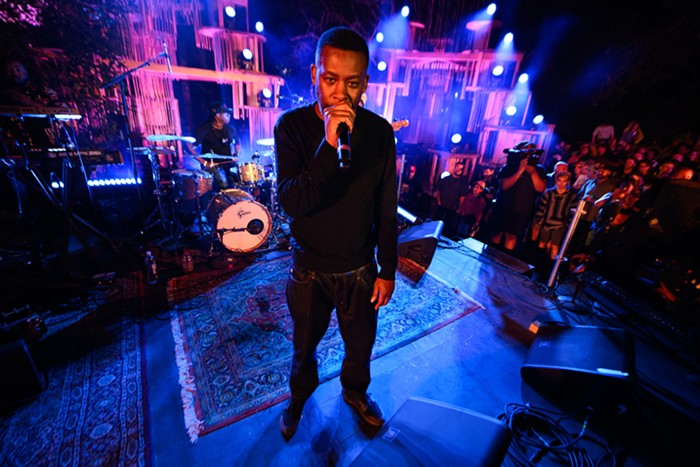The Design Issue
Design Week Is Back. Here's Your Game Plan.
How to Design Week
An Illustrated Introduction to Design Week Portland
Portland(s) of Tomorrow in Futurelandia
What Will the City Look Like in 50, 100, 200 Years?
Equity and Aesthetics Should Mix
Historian Reiko Hillyer Talks Density, Affordable Housing, and Equal Access to Public Space
Kevin Cavenaugh's Art of Risk
The Guerrilla Development Owner on Bringing Thoughtfulness, Creativity, and Risk into Portland Development
Design Week Portland: A User's Guide
Our Picks for Every Day of the Festival
Feeling the Overview Effect
Composer Tylor Neist Replicates an Astronaut's Return to Earth
The Central Eastside's Vanishing Borders
Diving into the Future of One of Portland's Most Rapidly Changing Areas
AKQA + New Avenues for Youth = A Very Different Pigeon
At-Risk Youth Partner with Digital Design Firm to Create New Fashion Brand
Crystal Beasley's Data-Driven Antidote to Fast Fashion
Her Portland-Based Company Is Finally Making a Goddamn Pair of Pants That Fits
Local Champion Cartoonists on Best Practices in Beer Bottle Design
Plus, How to Design a Brewery!
A Master Class in Wedding Calligraphy and Hand-Lettered Logos
Precious Bugarin and Bryn Chernoff Will Help You Make Your Own Font!
Essential Real Talk for Creative Freelancers
The Overshare: PDX Podcast Covers the Design Life—No Unicorns or Butterflies Allowed
Chelsea Peil's Ways of Looking at a Leaf
The Design Consultant on Visualizing the Shift Toward a Waste-Free Economy
CHELSEA PEIL is a Portland-based design and systems consultant. She specializes in sustainability strategies for companies and organizations making the shift from linear production processes (which produce waste) to circular production processes (which do not). For Design Week, she'll be discussing new developments in the European Union, and how designers can drive this shift toward waste-free systems. We talked about how visual thinking, as one part of a whole systems approach, will help designers think about the circular economy.
MERCURY: How do you anticipate that live visualization during your lecture will increase engagement with sustainability and the circular economy?
CHELSEA PEIL: There's plenty of research demonstrating how visualization moves people past one-dimensional interpretation and makes finding connections easier. An example is the difference between looking at a leaf or a picture of a leaf, and reading the word "leaf," and the associations and meanings someone draws from each experience. Visually thinking through the circular economy is an approach to making the connections between layered systems more accessible for designers, who can then go on to find opportunities within their own practices to shift from linear production processes to circular ones. This feeds into the creative process by incorporating holistic economic thinking earlier in the design process.
How will visualizing the circular economy help clarify the possibilities you're presenting, and avoid becoming another maze of information?
Visualizing... shifts the conversation from a sustainability framework to a best business practices approach that addresses increasing resource scarcity by redefining market efficiency. We expect that since designers will be coming from a visual thinking background that they'll be prepared for this approach to communication and ready to look for opportunities. The strength of visualization is to be able to present multiple perspectives simultaneously to engage audience members from different design backgrounds and with different goals, and to make connections between them.
Will there be any means for audience participation during the lecture?
There will be a Q&A session, and since this presentation will be a big-picture overview of developments in the EU, and eco design approaches such as biomimicry and permaculture, we expect to have a back-and-forth with the audience so that their questions can contribute to visualizing a whole-systems approach. We want to create a collaborative environment for identifying opportunities to take next steps within and across their respective fields.
What kind of documentation, if any, of the visualization will there be? Will it be made accessible afterward?
We intend to record the final visualization product, which will function both as a graphic recording of a specific conversation as well as a type of map that can be a resource for designers working toward greater awareness of how to design for the circular economy. This is especially important in the US, where less government support means designers are the drivers of this shift.
Visually Thinking Through the Circular Economy
Portland Art Museum, 1219 SW Park, Sun April 17, 3 pm, $12












